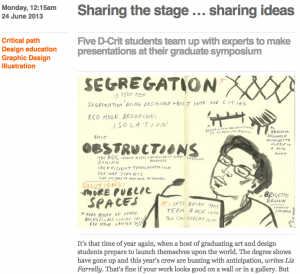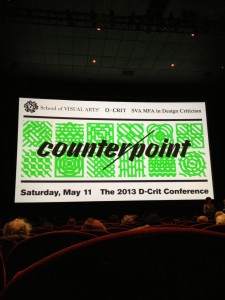This post was originally published on Eye Blog. I’m reposting it because I recently added a separate post about Fiona Raby’s talk at this conference, which provides background to the Dunne & Raby exhibition, “United Micro Kingdoms: A Design Fiction”, reviewed here.
Counterpoint
The 2013 D-Crit Conference, School of Visual Arts, New York City
Attended 11 May 2013
Monday 12:15am, 24 June 2013
“Sharing the stage…sharing ideas”
by Liz Farrelly
Originally published on Eye Blog
Five D-Crit students team up with experts to make presentations at their graduate symposium
It’s that time of year again, when a host of graduating art and design students prepare to launch themselves upon the world. The degree shows have gone up and this year’s crew are buzzing with anticipation. That’s fine if your work looks good on a wall or in a gallery. But what about the new breed of design critics on Masters courses on both sides of the Atlantic? Just how do writers make their mark?
Continue reading


